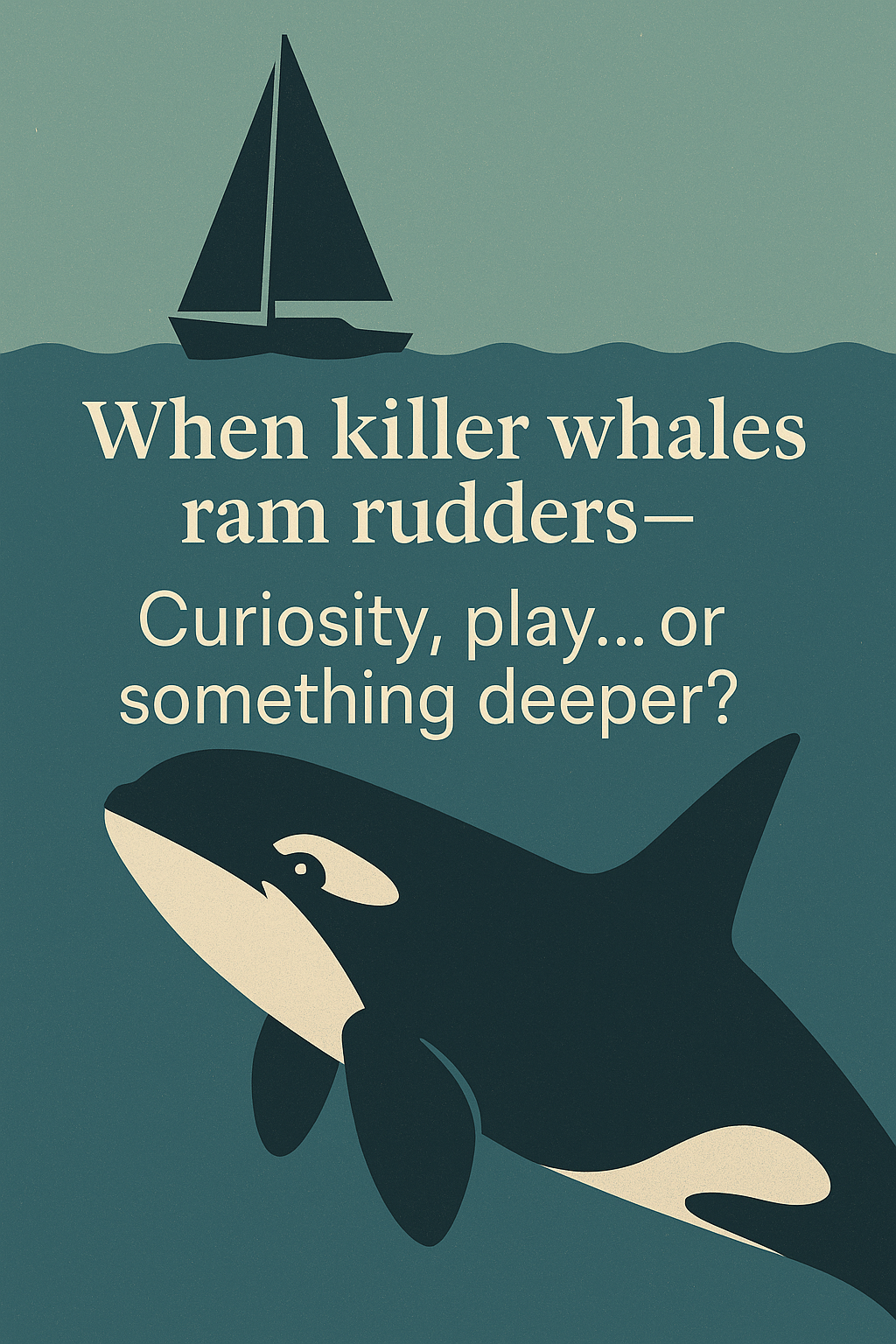
When killer whales ram rudders - curiosity, play....or something deeper?
Share
This is my second blog on killer whales. No secret that I have always found them fascinating. Their social interactions are so complex, almost human like....probably better than human like.
Orcas (killer whales) ramming into sailboats in the Strait of Gibraltar has been a real and increasingly reported phenomenon over the last few years, starting around 2020 (so Covid wasn't the only thig that happened that year!) . A relatively recent development, in the bigger picture. These incidents have drawn international attention, and experts are trying to explain the interactions.
Orcas are a species that inhabit all the seas of the world (except the Baltic and Black sea) and can be found almost everywhere, making them the second most widely distributed mammal on earth (humans are first). The animals in question are an endangered subspecies. They are called the Iberian orca and only about 40 individuals are currently estimated to be alive. They are smaller than other orca populations and feed exclusively on fish, specifically blue-fin tuna.

The location is primarily in the Strait of Gibraltar, off the coast of Spain, Portugal and Morocco. This is the only place the bahviour has been experienced.
Small groups of orcas—often juveniles—have been observed deliberately ramming hulls and rudders, circling boats, and sometimes causing serious damage to sailboats and catamarans.
Several boats have lost steering requiring rescuing and a few have even sunk after multiple strikes.
Why Are They Doing This?
There is no single confirmed explanation, but researchers and marine biologists have proposed several theories:
- Playful or Learned Behavior
- Orcas are highly intelligent and social animals known for play and mimicry (they have even been observed recreating human sounds in captivity).
- A single female, known as White Gladis, may have started the behavior, which others—especially juveniles—copied.
- Trauma Response
- One theory suggests White Gladis experienced a negative encounter with a boat, possibly an injury or a traumatic event, triggering retaliatory or defensive behavior. Human action and/or reaction may have had a direct influence on the hypothetical incident.
- Curiosity or Game
- Some experts think it might be a game to them: the movement of the rudder may stimulate their hunting instincts, similar to playing with prey. The hunting theory is problematic, according to some experts, as this group eats solely fish and does not hunt mammals. However, something may have triggered a different prey instinct.
They are known to earmark mostly sailing vessels under 15 meters, particularly those moving slowly or under sail (not motor). Commercial shipping and fast-moving powerboats are rarely targeted.

What Should Sailors Do? Below are what the research groups are recommending in the event of orca contact.
- Stop the boat and drop sails: This may make the boat less "interesting."
- Turn off the autopilot and avoid sudden rudder movements.
- Contact authorities immediately if interaction begins. There is also an app that has been created to check out orca activity prior to launching.
Important take home points:
- Orcas in this region are endangered, with only around 40–50 individuals. This is the very reason these individuals need to be protected.
- Authorities are working on deterrents, tracking, and educating sailors. The aim is to prevent encouraging the behaviour, protecting property and keep humans safe.
- It is imperative to discover the origin of this behaviour to be able to find a solution to the problem.

